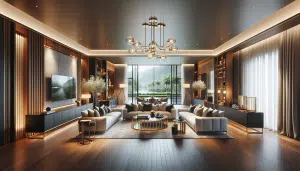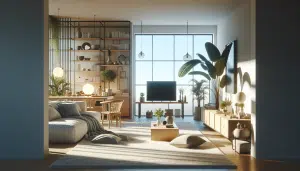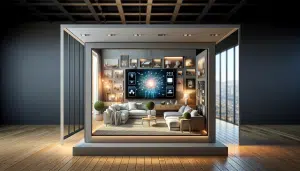Unexpected Ways Minimalism Can Transform You
Lily Carter September 23, 2025
Explore the new wave of minimalism and how it can refresh your lifestyle, boost your well-being, support mindful living, and promote inner calm. Dive into smart decluttering, design inspiration, and the emotional impacts that can subtly enhance everyday happiness.
What Minimalism Means Beyond a Trend
Minimalism is often mistaken for a simple aesthetic choice, but it’s much more profound. At its core, minimalism means living intentionally with only the things that truly serve a purpose, support well-being, or provide genuine joy. This approach fosters an environment free from clutter—physical, digital, and emotional. By embracing mindful living, people experience a fresh sense of freedom and control over their daily routines and surroundings. Whether you’re inspired by minimalist icons or just exploring what small changes could offer, this lifestyle is about making space for what matters most, not just eliminating excess.
Many are surprised to find that minimalism reaches far beyond home decor or the latest interior design fads. It’s a philosophy with roots in mindfulness, where each item or commitment is evaluated for its real value. Minimalism intersects with concepts like sustainable living, conscious consumption, and emotional well-being. The benefits unfold gradually: fewer distractions, a clearer mind, and a renewed appreciation for meaningful experiences. Studies suggest that even a subtle reduction in visual noise can lower stress and elevate mood, laying the foundation for a healthier, happier lifestyle (Source: https://www.ncbi.nlm.nih.gov/pmc/articles/PMC6463463/).
As a movement, minimalism resonates with a growing audience who crave less chaos and more clarity. Reduced clutter means less time spent managing possessions or organizing daily life. Instead, energy is freed up for hobbies, relationships, creativity, and wellness activities. Minimalism may look different for everyone, but at its heart, it supports intentional living. Whether you start by editing your closet or creating a digital detox, the principles remain: prioritize what enriches your life and let go of what doesn’t. It’s simple, but powerful.
Decluttering Your Space and Your Mind
The first practical step into minimalism is often decluttering physical spaces. Sorting through belongings can be an emotional journey, yet letting go of unnecessary items brings immediate relief. Research shows that a tidy space can significantly reduce feelings of overwhelm and anxiety. This means clearer countertops, organized closets, and pared-back living rooms that invite calm at every glance. Approaching the process room by room or focusing on categories—like clothing or books—can make the task manageable and deeply rewarding (Source: https://www.apa.org/news/press/releases/stress).
Decluttering is more than tossing out things. It’s about understanding why items are kept and what they contribute to daily life. Sentimental objects, aspirational purchases, or gifts often linger because of emotional attachments or guilt. Mindful decluttering suggests honoring these feelings but still choosing what genuinely fits your lifestyle. This process reveals patterns about consumption, attachment, and values, guiding more conscious decisions in the future. Letting go often feels like making space for new possibilities, both externally and within.
Beyond the physical, mental decluttering is equally essential. Unsubscribing from unnecessary digital notifications, setting boundaries with social media, and prioritizing mental downtime all contribute to a lighter, more focused mind. Many find that after reducing both tangible and intangible clutter, sleep improves and decision-making feels easier. The benefits ripple through everyday life—less stress, a calmer heart rate, and greater enthusiasm for routine activities. The connection between environment, mental health, and productivity is clear: when your surroundings are streamlined, your thoughts often follow suit.
Design Ideas: Minimalism as Daily Inspiration
Minimalist design stands out for its clean lines, neutral color palettes, and understated elegance. Popular not just in urban apartments but also in family homes, minimalist decor feels timeless and serene. Using a few high-quality, multifunctional pieces allows a space to breathe. Natural light, subtle textures, and houseplants add warmth without cluttering rooms. These elements encourage relaxation and allow personal style to shine through thoughtfully chosen accents.
Incorporating minimalism doesn’t require brand-new furnishings or expensive renovations. Sometimes, simply rearranging furniture or removing excess decor opens up a room and invites a fresh perspective. Minimalist design principles can extend to kitchens, workspaces, and even outdoor areas, creating places to unwind and recharge. The key is focusing on quality over quantity and finding creative storage solutions that keep essentials out of sight but close at hand. This intentional arrangement cultivates a sense of balance and order that supports daily well-being (Source: https://www.archdaily.com/870964/the-power-of-minimalism-in-interior-design).
Minimalism also encourages adaptability in daily living. Spaces designed with simplicity in mind transition easily between activities—a living room becomes a yoga studio, a dining area doubles as a workspace. Thoughtful lighting and organizational tools contribute to comfort without adding visual noise. This adaptability aligns with a modern lifestyle where flexibility matters. Design, in this context, becomes less about aesthetics alone and more about functionality, supporting everything from creativity to restful routines.
Minimalism and Emotional Well-being
Many discover that simplifying living spaces positively affects emotions and relationships. Studies link minimalism to lower stress, increased gratitude, and more meaningful connections with family and friends. When spaces aren’t crowded with distractions, people are more present—with loved ones and themselves. This presence cultivates deeper conversations and shared moments, replacing background noise with calm attention. A minimalist environment supports open, honest communication, which is vital for strong relationships and personal growth (Source: https://greatergood.berkeley.edu/article/item/how_minimalism_can_make_you_happier).
Mental clarity is closely tied to physical surroundings. When clutter is cleared, the brain can focus better on creative problem-solving and self-reflection. Minimalism also invites regular gratitude practices—since only truly valued items remain, people naturally notice and appreciate them more. This attention to the present moment mirrors the benefits of mindfulness, which can help reduce anxiety and boost happiness even during busy periods. Emotional resilience, nurtured through these habits, supports greater adaptability and less reactivity to stressors.
The emotional impacts of a minimalist lifestyle often reveal themselves slowly but endure longer. Reduced stimuli mean fewer triggers for frustration, comparison, or envy, allowing space for genuine self-acceptance. By consciously designing both spaces and schedules to reflect individual needs—not external expectations—many feel closer to their authentic selves. This self-alignment fosters sustainable happiness and can inspire positive changes in other areas, from relationships to work choices and self-care routines.
Mindful Consumption and Financial Freedom
Minimalism naturally leads to more intentional spending habits. When purchases are aligned with core values—versus trends or momentary desires—money is reserved for experiences and objects that bring lasting satisfaction. Many report saving more, incurring less debt, and even feeling liberated from the pressure to constantly acquire. This mindful consumption extends to groceries, clothing, and tech, benefiting budgets as well as the environment. It’s a subtle shift, but with real financial rewards (Source: https://www.cfainstitute.org/en/research/foundation/2020/essentials-of-personal-finance).
Intentional consumption also supports sustainability. Fewer purchases mean less waste and lower demand for fast fashion or disposable products. Minimalists often prioritize reusable, ethically made, or high-quality goods designed to last. Brands that align with these values often become favorites as shoppers seek transparency and integrity. These habits contribute to a lighter ecological footprint and signal a preference for slow, thoughtful production cycles that respect both people and the planet.
Financial freedom through minimalism isn’t just about saving money; it’s about changing the relationship to shopping and ownership. Choosing less opens room for investment in experiences, learning, travel, or hobbies that might otherwise be pushed aside. Many find that over time, the shift from material accumulation to experience-driven living enhances personal fulfillment and lasting happiness. It’s a cycle of abundance rooted in intentional simplicity, not deprivation.
Living Minimally in a Connected World
Modern technology brings endless information and social connections, both helpful and overwhelming. Minimalism encourages mindful digital consumption—choosing only the most useful platforms, setting boundaries around screen time, and regularly curating online feeds. Digital decluttering frees up mental energy and helps focus on real-life connections and offline experiences that truly matter. Unplugging occasionally allows for deeper rest and reflection, which rejuvenates creativity and mental health (Source: https://www.psychologytoday.com/us/blog/the-power-prime/201911/why-digital-minimalism-is-hard-and-so-beneficial).
Adopting minimalist principles in a connected world often means prioritizing quality connections over quantity—both online and face-to-face. This fosters a stronger sense of community, even in fast-paced environments. Simple rituals, like family dinners or device-free time, provide anchors of calm within otherwise busy days. Community-focused spaces—think libraries, parks, or shared gardens—extend the ideals of minimalism beyond individual homes into public life, nurturing well-being on a larger scale.
Minimalism in the digital age is not about rejection but about curation. Picking what enriches life, from apps to news sources to friendships, helps maintain balance and prevents digital burnout. This intentional approach creates more meaningful leisure, work, and rest. With a minimalist mindset, it becomes easier to recognize what nurtures real joy and let go of what distracts. The journey is ongoing, always evolving as needs and technology change.
References
1. National Institutes of Health. (2019). The Association between Home Environment and Mental Health. Retrieved from https://www.ncbi.nlm.nih.gov/pmc/articles/PMC6463463/
2. American Psychological Association. (n.d.). Stress in America. Retrieved from https://www.apa.org/news/press/releases/stress
3. ArchDaily. (2017). The Power of Minimalism in Interior Design. Retrieved from https://www.archdaily.com/870964/the-power-of-minimalism-in-interior-design
4. Greater Good Science Center. (n.d.). How Minimalism Can Make You Happier. Retrieved from https://greatergood.berkeley.edu/article/item/how_minimalism_can_make_you_happier
5. CFA Institute. (2020). Essentials of Personal Finance. Retrieved from https://www.cfainstitute.org/en/research/foundation/2020/essentials-of-personal-finance
6. Psychology Today. (2019). Why Digital Minimalism Is Hard and So Beneficial. Retrieved from https://www.psychologytoday.com/us/blog/the-power-prime/201911/why-digital-minimalism-is-hard-and-so-beneficial







